
Jupiterimages/Stockbyte/Getty Images
Types of Beans
Beans are actually legume vegetables. They are plants with edible seeds that grow within pods. The pods appear after the plant has flowered and continue to grow until the seeds are mature. There are several varieties of beans. Kidney, lima, garbanzo, navy, pinto and soy beans are just a few.
Nutrient Content of Beans
Beans are high in protein and even higher in starch. They are complex carbohydrates that are low in calories and fat. Peas and beans do not have a complete protein structure, but what protein they do have is well utilized by the human body. Beans also contain adequate amounts of tryptophan and methionine. These amino acids are essential to the function of the brain.
Carbohydrate Content of Beans
As stated previously, beans and other legumes are high in carbohydrates and protein. Both protein and carbohydrates are used by the body as a fuel source. Beans have the right balance of nutrients to function optimally without much assistance from other foods. For centuries, beans have been a staple in times of famine, when no other sources of protein could be found. Protein is known as a building block of the human body. Carbohydrates offer the fuel resources to allow that building to continue as it's needed. Beans are known to be one of the few complete foods. They have most of the nutrients that the human body requires for survival. They also are high in fiber.
Storing Beans
Beans and other legumes are best stored in dried form. They will hold their nutrients for several months and can be stored for up to a year in an air-tight container. They can be frozen, but it's best if they are cooked first.
Cooking Beans
If beans are in dried form, wash them thoroughly under running water. Place in a large pot of water. Allow to set for 2 to 3 hours until they start to swell. Rinse them well and place in fresh water. Add salt and pepper to taste along with other seasonings. Bring to a low boil and allow to cook for approximately 3 hours. Putting a lid on the pot will keep in a majority of the nutrients and seal in flavor. Ham and onions can be added for additional flavor. Placing a carrot in the pot during cooking will reduce the risk of gas after the meal. Remove the carrot before serving and discard. Beans, like any other food, will lose some nutrients through the cooking process. If at all possible, use a lid to keep as much of the liquid in the pot as possible. This will save some nutrients, but not all.
Related Articles
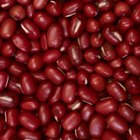
How to Soak Adzuki Beans
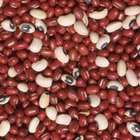
How to Convert Dried Beans to Cooked ...

How to Cook Beans With Kombu Seaweed

How to Reconstitute Dried Beans

Do Beans Cook Faster Covered?
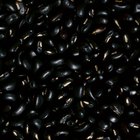
How to Cook Dry Black Beans
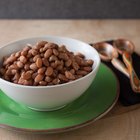
How to Cook Pinto Beans in a Crock Pot

Should You Steam or Blanch Bean Sprouts ...
How to Store Dry Beans & Rice for ...

How to Cook Beans
How to Cook a Pot of Mixed Beans

How to Cook Dried Black Beans in a Slow ...
How Long to Cook Dried Kidney Beans on ...

How to Freeze Lentils

How to Blanch Lima Beans

Spices to Use in Red Beans

The Best Way to Cook Dry Beans
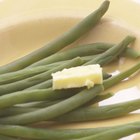
How to Cook Dragon's Tongue Beans

Cannellini Beans for Weight Loss
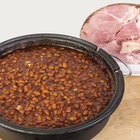
How to Cook Pinto Beans & Ham Hocks in ...
Writer Bio
This article was written by the CareerTrend team, copy edited and fact checked through a multi-point auditing system, in efforts to ensure our readers only receive the best information. To submit your questions or ideas, or to simply learn more about CareerTrend, contact us [here](http://careertrend.com/about-us).
Photo Credits
Jupiterimages/Stockbyte/Getty Images